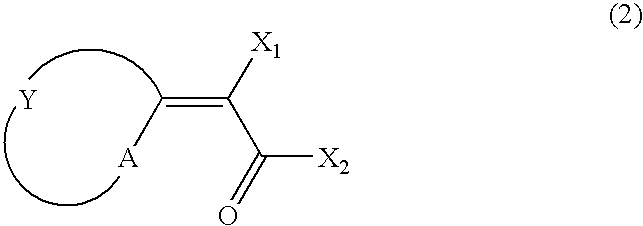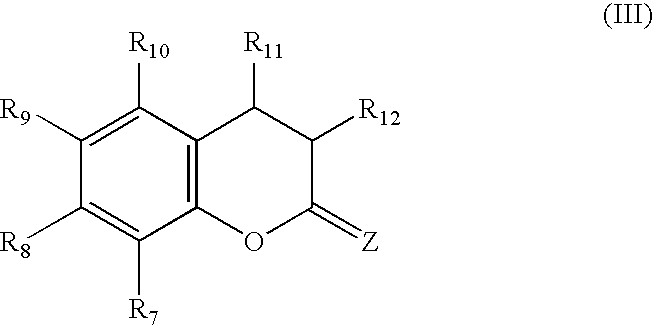Photosensitive lithographic printing plate precursor
a lithographic printing plate and precursor technology, applied in the direction of photosensitive materials, photosensitive materials auxiliaries/base layers, instruments, etc., can solve the problems of insufficient development of the edge of an image suffering from insufficient polymerization, affecting image quality and sharpness, and reducing resolution, so as to achieve satisfactory tint uniformity in midtones in fm screening
- Summary
- Abstract
- Description
- Claims
- Application Information
AI Technical Summary
Benefits of technology
Problems solved by technology
Method used
Image
Examples
example 1
1) Preparation of Support
[0107] A 0.3 mm thick aluminum plate (material grade: 1S) was grained with a nylon brush (#8) and an aqueous slurry of pumice stone (800 mesh). After thoroughly washing with water, the aluminum plate was etched by immersion in a 10% sodium hydroxide aqueous solution at 70° C. for 60 seconds, followed by washing with running water. After neutralizing by immersion in 20% nitric acid, followed by washing with water, the aluminum plate was electrolytically grained in a 1% nitric acid aqueous solution by applying a sine wave alternating current under a condition of VA=12.7 V with an electric quantity of 300 Coulomb / dm2 at the anode. The thus grained surface had a mean roughness Ra of 0.45 μm. The plate was desmutted by immersing in a 30% sulfuric acid aqueous solution at 55° C. for 2 minutes. The plate was then anodized in a 20% sulfuric acid aqueous solution at 33° C. at a current density of 5 A / dm2 for 50 seconds, with a cathode placed on the grained surface ...
examples 2 and 3
[0116] Photosensitive lithographic printing plate precursors were produced in the same manner as in Example 1, except for replacing the photosensitive composition P-1 with photosensitive composition P-2 or P-3 having the same formulation as composition P-1 except for changing the sensitizing dye as shown in Table 1. Each of the printing plate precursors was exposed and processed in the same manner as in Example 1, and the resulting plating plate was evaluated in the same manner. The results obtained are shown in Table 1.
example 4
[0118] A photosensitive lithographic printing plate precursor was produced in the same manner as in Example 1, except that photosensitive composition P-5 having the following formulation was applied in place of composition P-1 to a dry thickness of 1.8 g / m2. The printing plate precursor was exposed and processed in the same manner as in Example 1, and the resulting plating plate was evaluated in the same manner. The results obtained are shown in Table 1.
Formulation of photosensitive composition P-5:Ethylenically unsaturated compound (X1) 0.5 partsBinder polymer (X2) 1.0 partSensitizing dye (D29) 0.1 partsPolymerization initiator (X3) 0.1 partsε-Phthalocyanine (F1) dispersion 0.02 partsSensitization assistant (X4)0.0005 partsFluorine-containing nonionic surfactant 0.02 parts(Megafac F-780F, available from DainipponInk & Chemicals, Inc.)Methyl ethyl ketone 26.0 partsPropylene glycol monomethyl ether 26.3 parts
[0119] The structural formulae of the ethylenically unsaturated compou...
PUM
| Property | Measurement | Unit |
|---|---|---|
| wavelength region | aaaaa | aaaaa |
| weight ratio | aaaaa | aaaaa |
| weight ratio | aaaaa | aaaaa |
Abstract
Description
Claims
Application Information
 Login to View More
Login to View More - R&D
- Intellectual Property
- Life Sciences
- Materials
- Tech Scout
- Unparalleled Data Quality
- Higher Quality Content
- 60% Fewer Hallucinations
Browse by: Latest US Patents, China's latest patents, Technical Efficacy Thesaurus, Application Domain, Technology Topic, Popular Technical Reports.
© 2025 PatSnap. All rights reserved.Legal|Privacy policy|Modern Slavery Act Transparency Statement|Sitemap|About US| Contact US: help@patsnap.com



